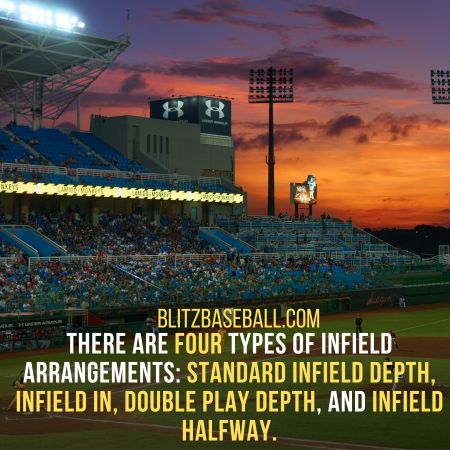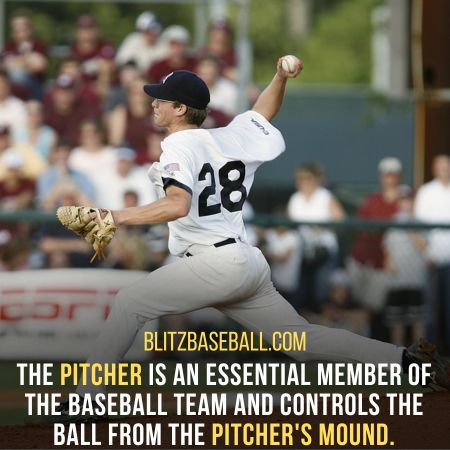This article provides an objective and analytical overview of the positions on the baseball field and the corresponding players’ standing arrangements. It explores the various infield configurations, including standard infield depth, infield in, double play depth, and infield halfway. The positioning of infielders is influenced by factors such as the hitters’ tendencies and the fielders’ arm strength.
The article also delves into the role and responsibilities of the pitcher, who holds a pivotal position on the baseball team and controls the game from the pitcher’s mound. It outlines the regulations that pitchers must adhere to, such as touching the rubber plate of the mound and throwing the ball within the strike zone. Additionally, the article provides a concise overview of pitcher characteristics and different pitching techniques.
Furthermore, the article elucidates the duties and attributes of the first baseman, second baseman, third baseman, and shortstop. It highlights notable players who have excelled in these positions.
The first baseman’s primary responsibility is to cover first base when a batter hits the ball, while the second baseman occupies the infield’s middle-right side and the third baseman stands closest to home plate. The shortstop, perceived as the position with the highest defensive capabilities, occupies the space between second and third base and is renowned for their range and accuracy.
Key Takeaways
- There are four types of infield arrangements: Standard Infield Depth, Infield In, Double Play Depth, and Infield Halfway.
- The positions of the infielders can vary based on hitters and fielders’ arm strength.
- The pitcher is an essential member of the baseball team and controls the ball from the pitcher’s mound.
- There are different types of pitchers, such as starting pitchers and relief pitchers, each with their own roles and responsibilities.
Arrangement of Positions On The Baseball Field
The arrangement of positions on the baseball field involves four types of infield arrangements: Standard Infield Depth, Infield In, Double Play Depth, and Infield Halfway. These arrangements determine the positioning of the infielders relative to the bases and the grass line.
Standard Infield Depth positions the first baseman and third baseman away from the grass line, while the shortstop and second baseman are positioned in the middle.
Infield In brings all the infielders near the grass line, reducing the distance between first and second basemen and between shortstop and third baseman.
Double Play Depth positions the first and third basemen closer to the bases and grass line, while the second baseman and shortstop are positioned with equal distance from second base.
Infield Halfway reduces the distance from second base for the shortstop and second baseman, and brings the first and third basemen close to the grass line.
These infield arrangements are important defensive strategies that vary based on the game situation, hitters, and fielders’ arm strength.
Infield Positioning
Infield positioning on the baseball field involves strategic arrangements of players based on various factors such as hitter tendencies, fielder arm strength, and defensive requirements.
The importance of infield positioning in baseball strategy cannot be overstated. By positioning infielders in specific locations, teams can increase their chances of making defensive plays and preventing runs from scoring.
For example, infielders may shift towards one side of the field if a batter has a tendency to hit the ball in that direction. This can greatly impact defensive performance and game outcomes, as it increases the likelihood of fielders being in the right place to make a play.
Additionally, infield positioning can also affect the decisions made by pitchers, as they may adjust their pitch selection and location based on the positioning of the infielders.
Overall, infield positioning plays a crucial role in baseball strategy and has a significant impact on defensive performance and game outcomes.

First Baseman
Positioned near the first base bag, the first baseman plays a crucial role in fielding ground balls, collecting bad throws, and keeping the runner at first base.
In addition to their defensive responsibilities, first basemen also have an important offensive role in the game of baseball. Offensively, they are expected to contribute to the team’s run production by hitting for power and average.
They often have a higher slugging percentage compared to other infield positions due to their ability to hit home runs and extra-base hits. First basemen are also responsible for driving in runs and advancing base runners. Their offensive production is essential for the success of the team.
Overall, the first baseman’s role combines defensive skills with offensive contributions, making them a valuable asset to any baseball team.
Second Baseman
Second basemen play a crucial role in covering the infield’s middle-right side and adjusting their position based on the batter’s handedness. They are responsible for fielding ground balls within their radius and covering areas between first and second base.
Additionally, second basemen are tasked with covering second base during steal attempts and possess quick pivoting abilities. Their defensive skills are of utmost importance, as they must act quickly to keep ground balls in play and have a good command of defense.
Agility and quickness are essential characteristics for second basemen, along with knowledge of receiving and throwing mechanics. Height is not a major factor in this position.
Overall, the second baseman’s role is vital in maintaining a strong defense and contributing to the team’s success.

Third Baseman
The third baseman, standing closest to home plate, plays a crucial role in fielding ground balls, line drives, and pop flies in the area around third base. This position requires a strong throwing arm and the ability to react quickly to make accurate throws.
The third baseman’s defensive strategies include positioning themselves near the foul line based on the batter’s handedness and adjusting their stance to be robust and broader than a shortstop.
Historically, third basemen were larger in size, but height is not a major factor in this position. Notable third basemen in baseball history include Chipper Jones, Mike Schmidt, Wade Boggs, Adrian Beltre, and Ron Santo.
With the most home runs and highest slugging average among infield positions, the third baseman is a key player in both offense and defense.
Shortstop
Moving on from discussing the responsibilities and characteristics of the third baseman, we now shift our focus to the shortstop position on the baseball field.
The shortstop is widely regarded as the most defensively capable position and plays a crucial role in the infield. Positioned between second and third base, the shortstop possesses strong throwing arm and exceptional glove skills, enabling them to make accurate and quick plays.
The shortstop’s defensive skills are essential in preventing opposing teams from advancing on the bases. They are responsible for anchoring the infield, assisting other players, and working closely with the catcher to strategize defensive plays.
One of the key roles of the shortstop is their involvement in turning double plays, which requires precise timing, agility, and coordination with the second baseman.
In summary, the shortstop’s defensive skills and role in turning double plays make them an integral part of a baseball team’s defensive strategy.
Markdown List:
- Accurate and quick plays
- Anchoring the infield
- Assisting other players
- Working closely with the catcher
- Key role in turning double plays
Defensive Responsibilities
The defensive responsibilities of the shortstop encompass anchoring the infield, coordinating with teammates, and executing key plays to prevent opposing teams from advancing on the bases.
The shortstop’s defensive positioning is crucial, as they stand between second and third base, allowing them to cover a significant portion of the infield. They are responsible for fielding ground balls, line drives, and pop flies hit to their side of the field.
Additionally, the shortstop plays a pivotal role in double plays and cutoffs, working in tandem with other infielders to quickly and efficiently eliminate base runners.
Effective communication is essential for the shortstop to coordinate defensive strategies and ensure seamless execution of plays. By being knowledgeable about the game and player movements, the shortstop can anticipate plays, make split-second decisions, and contribute to the overall success of the team’s defense.

Frequently Asked Questions
What are the different types of pitches that pitchers can throw?
Pitchers have a variety of pitches in their repertoire, including sinker, 4-seam fastball, 2-seam fastball, knuckleball, curveball, slider, cutter, rare eephus, and changeup. These pitches have different movement and speed, allowing pitchers to deceive batters and maximize their effectiveness.
How does a relief pitcher’s role differ from a starting pitcher’s role?
The role of a relief pitcher differs from that of a starting pitcher in several ways. Relief pitchers typically enter the game later and pitch for shorter durations, while starting pitchers begin the game and pitch for longer periods. The responsibilities and strategies employed by each type of pitcher also vary.
What are the characteristics and responsibilities of a first baseman?
The first baseman in baseball has the responsibility of being close to first base at all times and has various characteristics that make them suitable for the position. This position is important in baseball because it plays a crucial role in fielding and preventing the opposing team from scoring.
What are the key characteristics of a shortstop and why is this position considered the most defensively capable?
The key characteristics of a shortstop include a strong throwing arm, good glove skills, game knowledge, mental strength, and versatility. The shortstop is considered the most defensively capable position due to their range, accuracy, and ability to anchor the infield and assist other players.
Who are some notable players who have excelled in the third baseman position?
Notable third baseman players include Chipper Jones, Mike Schmidt, Wade Boggs, Adrian Beltre, and Ron Santo. These players have excelled in the position due to their strong throwing arms, fielding skills, and ability to hit for power.
Conclusion
In conclusion, the positions on the baseball field are strategically arranged to maximize defensive coverage and effectiveness.
Infielders have various positioning options, such as standard depth, infield in, double play depth, and halfway, depending on the game situation.
The pitcher plays a crucial role in controlling the ball from the pitcher’s mound, following specific rules and employing different pitching techniques.
The first baseman, second baseman, third baseman, and shortstop each have unique responsibilities and characteristics that contribute to the team’s defensive success.
Overall, understanding these positions and their roles is essential for a well-coordinated and efficient baseball team.
